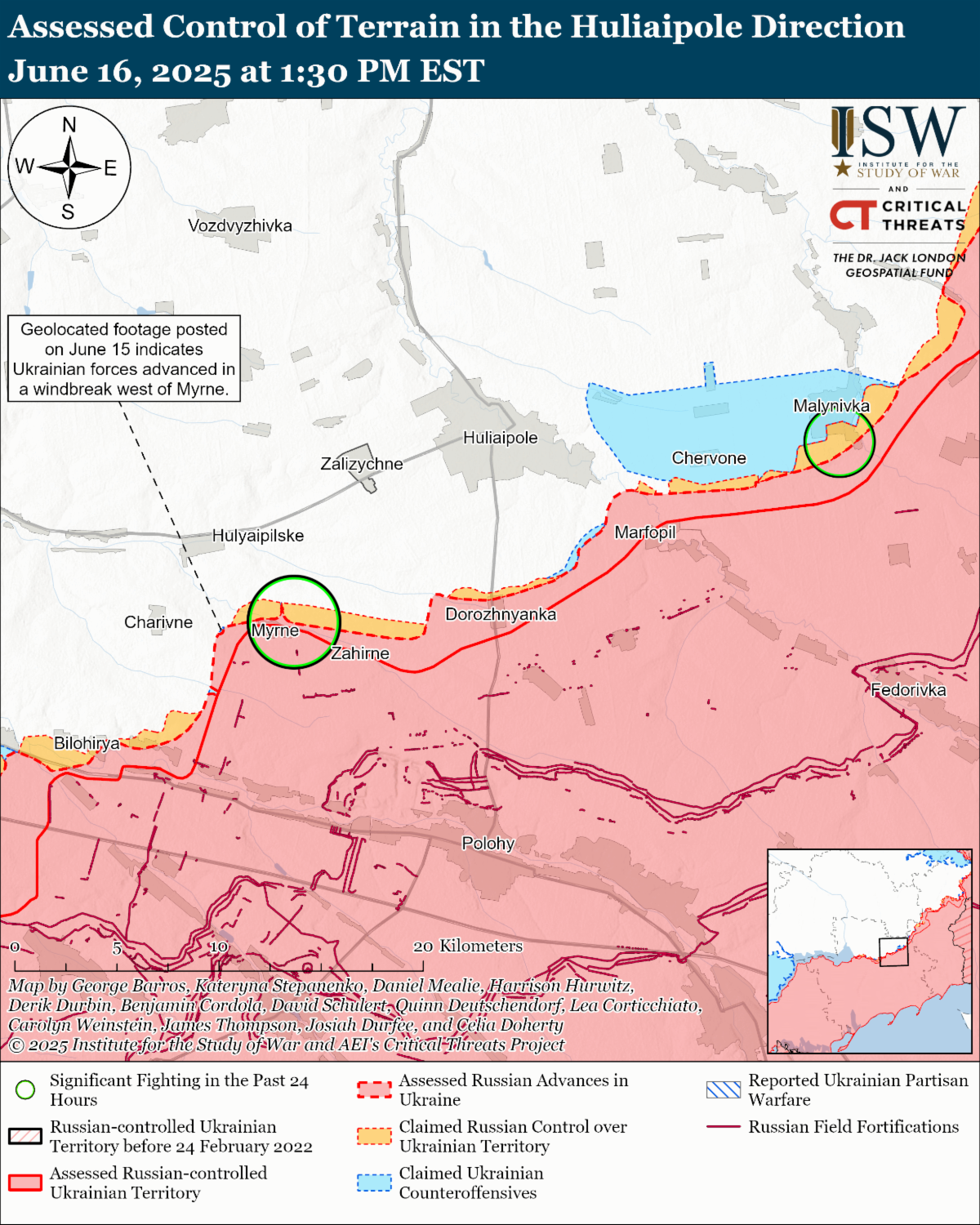Russia’s consumption of its Soviet-era tank stores appears to be slowing, possibly due to Russia's increasing transition to using motorcycles and all-terrain vehicles (ATVs) on the battlefield. A social media source tracking equipment at Russian military depots via satellite imagery shared an updated assessment of smaller Russian tank and armored vehicle storage facilities on June 15 and assessed that Russia still has 46 percent of its pre-war tank reserves, 42 percent of its pre-war infantry fighting vehicle (IFV) reserves, and 48 percent of its pre-war armored personnel carrier (APC) reserves as of a recent unspecified date. The source stated that imagery of eight Russian military depot appears to show that Russia has emptied most of the depots of their vehicle reserves and assessed that Russia will likely deplete its remaining tank and armored vehicle reserves by the end of 2025. The social media source assessed in late December 2024 that Russia had 47 percent of its pre-war tank reserves, 52 percent of its pre-war IFV reserves, and 45 percent of its pre-war APC reserves remaining in storage. (The source noted on June 15 that they updated their previous assessments of Russia’s pre-war reserves and found that Russia had 241 more tanks, 174 more IFVs, and 687 more APCs before the full-scale invasion than the source previously assessed, which likely accounts for the increase in Russian APCs stores from 45 percent in the December 2024 assessment to 48 percent in June 2024.) The social media source also stated that satellite imagery analysis indicates a ”dramatic” increase in ”almost all” types of equipment deployed to a Russian military base near Petrozavodsk, Republic of Karelia, located roughly 373 kilometers from the international border with Finland. Russia may have additional armored vehicles and tanks in covered storage that are not visible in satellite imagery. The Wall Street Journal (WSJ) reported on April 27 that a senior Finnish military official stated that Russia is sending "almost none" of its newly produced tanks to the frontline in Ukraine but is stockpiling the."
The social media source's data suggests that Russia's consumption of Soviet-era tank stocks has slowed in recent months, an observation consistent with ISW’s study of recent battlefield combat footage which shows that Russian forces are increasingly using motorcycles and buggies in place of armored vehicles along the frontline in Ukraine. Russian forces have been increasingly using unarmored civilian vehicles, mainly motorcycles and all-terrain vehicles (ATVs), throughout the theater in Ukraine since late Fall 2024. ISW previously noted that Russia's increased use of motorcycles is an adaptation in response to pervasive Ukrainian drone strikes against Russian armored vehicles and the unsustainable armored vehicle losses that Russian forces suffered in late 2023 and 2024. Ukrainian drone operations have significantly complicated how to tactically employ tanks, as large and slow-moving armored vehicles and tanks are vulnerable to drones. Russian forces appear to be leveraging faster-moving motorcycles and buggies to advance through the contested "gray zones" that Ukrainian and Russian drone operators have created along the frontline. Russia's adaption has succeeded in granting Russian forces marginal tactical gains at the expense of significant infantry losses. ISW previously assessed that Russian armored vehicle losses are unsustainable and are undermining Russia’s ability to sustain a protracted high-intensity war, but it remains unclear if Russia’s increased reliance on motorcycles and buggies will be sufficient to offset these losses in the medium- to long-term.
Key Takeaways:
- Ukraine and Russia conducted an exchange that included the bodies of soldiers killed in action (KIA) on June 16 in accordance with agreements reached during talks in Istanbul on June 2.
- Ukraine's Foreign Intelligence Service (SZRU) reported that the Kremlin is spreading narratives about the POW and KIA exchanges in order to sow panic in Ukraine and discredit Ukraine in the international community – in line with ISW’s recent assessments.
- Russia’s consumption of its Soviet-era tank stores appears to be slowing, possibly due to Russia's increasing transition to using motorcycles and all-terrain vehicles (ATVs) on the battlefield.
- Russia continues to set conditions to pose a long-term strategic threat to the United States and its Western allies even after the end to Russia's war in Ukraine.
- Ukrainian forces recently advanced near Borova and in Zaporizhia Oblast, and Russian forces recently advanced near Siversk, Toretsk, and Novopavlivka.
| 




 [ISW] 이란 업데이트 특별 보고서, 2025년 6월 16일, 저녁 에디션
[ISW] 이란 업데이트 특별 보고서, 2025년 6월 16일, 저녁 에디션
 [ISW] 이란 업데이트 특별 보고서, 2025년 6월 16일, 모닝 에디션
[ISW] 이란 업데이트 특별 보고서, 2025년 6월 16일, 모닝 에디션